The South of France: A Pocket Guide for Curious Travelers
Dear friends,
I’ve been thinking for the longest time that there should be a word in English for a curious person. I just recently learned that a philocalist is a lover of beauty…or someone who sees beauty in all things, which is decidedly harder. There’s a word for people who love the moon (selenophile), and a word for people who love sunsets (opocarophile). But no word for people who are curious. It’s a shame isn’t it? The dictionary tells me that the closest the English language comes to a curious person is nosy or inquisitive or busybody, but the first two aren’t nouns, and the third misses the point completely.
Anyway, that’s the kind of traveler I am: a curious one. I like to dig into the history and art and music and culture of a place before I visit.
And that’s where the idea for Pocket Guides for Curious Travelers came from. They are not complete guides in any way, but are meant to be more of an inspiration. They are a non-comprehensive, totally biased, and completely subjective miscellany.
Just a little fun, really.
But I’d love to know what I’ve missed…what are you favorites places and things in the south of France?
In the meantime, happy weekend, xo
{Did you know?}
That no one even thought of going to the French Riviera during the summer until the 1920s? In 1923, a wealthy American couple, Gerald and Sara Murphy, started renovating a villa, which they would call Villa America, near Antibes. They invited their artist and writer friends, played on the beach during the day and threw lavish parties at night.
That same year, Coco Chanel was photographed disembarking from a yacht nearby, sporting a deep tan after spending all day in the sun. Suddenly, after centuries of darkened skin being associated with manual labor, everyone who was fashionable wanted a tan. The age of sunbathing was ushered in, and there was no better place to do it than the French Riviera.
F. Scott Fitzgerald was among the visitors to the Murphys’ villa, and he modeled Nick and Nicole Diver in his Riviera novel Tender is the Night on the couple.
You can read more about the Murphys in Calvin Tomkins’ short book Living Well is the Best Revenge - which started out as an article for the New Yorker and in which Sara Murphy claims to bear no resemblance whatsoever to Nicole Diver - and in Amanda Vaill’s Everybody Was So Young.
{A few books to read in anticipation of your visit}
Perfume from Provence & Sunset House, Lady Winifred Fortescue
You can’t swing a dead cat in a bookshop these days without hitting an “escape to Provence” memoir, but Lady Winifred Fortescue did it in the 1930s, starting with Perfume from Provence and continuing with its sequel Sunset House.
Jean de Florette & Manon des Sources, Maurice Pagnol
Also his autobiographies My Father’s Glory and My Mother’s Castle. And his films, specifically the Marseille Trilogy. Who could be more Provençal than Marcel Pagnol?
The Count of Monte Cristo, Alexandre Dumas
The Chateau d’If, where Edmond Dantès spends fourteen years in prison, is right off the coast of Marseille.
Perfume, Patrick Suskind
Set partly in Grasse, Perfume is the story of Grenouille, a man whose exceptional sense of smell leads him to murder.
Madame, Will You Talk, Mary Stewart
A mid-century caper set in Avignon and Marseille.
The Letters of Vincent van Gogh, Vincent van Gogh
There are a million fictional accounts of Vincent’s time in the south of France, but his letters, which are mostly written to his brother Theo, not only act as autobiography, they are also a reminder that the brilliant Vincent was as much a philosopher as a painter.
{A Piece of History}
The great and influential American food and cookbook writers James Beard, Julia Child, M.F.K. Fisher, Evan Jones (and his cookbook editor wife Judith Jones), and Richard Olney all happened to be on holiday in Provence in late 1970. Julia and Paul Child owned a small cottage - La Pitchoune - on her co-author Simone Beck’s estate near Grasse, and Richard Olney lived in the Provençal village of Sollies-Toucas. The 300-pound James Beard had come to Grasse to visit a famous weight-loss expert nearby, and spent much of his holiday on a strict diet. M.F.K. Fisher spent the year with her sister and children, traveling between Aix-en-Provence, Marseilles, and Arles. She kept a journal, and her great-nephew Luke Barr wrote about the memorable year in his book Provence, 1970. For her part, Fisher wrote about the year in her memoir Two Towns in France, and also in her collection of essays As They Were.
(Did you know you can rent La Pitchoune on AirBnB? It will cost you, though.)
{A little music to get you in that “South of France” mood}
Charles Trenet. Cheesy, maybe. But as soon as I hear the first few notes of La Mer, I’m off to the Mediterranean in my mind, sipping wine on a terrace as I gaze out at the bright blue sea.
Did you know that the Gipsy Kings are from Arles? They are known for playing Catalan and Spanish music, but the traditional folk music of Provence influenced their work as well.
Claude Debussy isn’t from the south of France, but his languid, dreamy melodies are perfect for long summer days and hot summer nights.
Then there’s Sur le Pont d’Avignon. I can’t in good conscience recommend it, because then you’d have it in your head all day. (Once you start singing, you can’t stop.) But, did you know that the Pont d’Avignon is a real bridge, and the story of its miraculous construction is fascinating? It’s worth reading about.
{One Piece of Artwork Not to Miss if You Visit}
I am going to cheat a little bit and tell you the one place that I wish that I had had a chance to visit, but didn’t. I do think it’s probably the one piece of artwork that you shouldn’t miss if you visit (and will be first on my list if I get a chance to return), and that’s Henri Matisse’s Chapelle du Rosaire in Vence.
Matisse was in his 70s and living in nearby Nice, when he underwent surgery for cancer in 1941. One of the young nurses who helped him during his recovery entered the Dominican convent in Vence soon afterward. After the war, the convent decided to build a new chapel nearby, and the nurse, Sister Jacques-Marie, asked Matisse if he would help. Matisse, who had recently relocated to Vence, agreed and designed everything from stained glass windows to furniture to priests’ clothing. He considered the resulting chapel his masterpiece - the culmination of his life’s work. She wrote a book about the chapel and her friendship with Matisse called, appropriately, Henri Matisse: The Vence Chapel.
{A few things that I love in the south of France, and I think you’ll love, too}
Market day in Aix-en-Provence - Full of artisan food, old books, antiques, lavender, produce, and color, market day in Aix-en-Provence is a feast for all of the senses.
Carrière des Lumières at Les Baux de Provence - An abandoned stone quarry is the setting for extraordinary immersive art shows. Over 100 projectors cast images on the walls and ceiling of the underground quarry, while visitors wander through the maze, surrounded by art and music.
Isle-sur-la-Sorgue - A lovely oasis of a town on the Sorgue River. With some of the largest antique markets in the south of France.
Cassis - Nestled near the edge of Calanques National Park, Cassis is a quiet beach town - more of a small city, really - surrounded by striking calanques (cliffs). With a lovely marina and white sand, it’s exactly what I would have liked the Riviera to have been.
Pont du Gard - Well, it’s just one of the wonders of the ancient world, isn’t it? Not one of THE SEVEN WONDERS, but a wonder nonetheless. This masterpiece of Roman architecture needs to be seen to be believed.
{A little off the beaten track, but well worth the effort}
The hill towns of the Luberon: Lacoste, Oppède-le-Vieux, Roussillon, Gordes, Bonnieux. They are not under-the-radar at all…the hill towns of the Luberon are most likely exactly what we think of when we picture Provence in our mind. I am categorizing them as off-the-beaten track solely for the fact that they are almost impossible to reach via public transportation. If you really want to visit the hill towns of the Luberon, you’ll need a car.
Of course, I am just scratching the surface…and this list reflects my favorites and my particular interests. If you really want to get to know more about life in the south of France, I have three Substack newsletters to recommend: Karen Karbo’s Yeah, no. Not Happening - which I promise will never fail to make you laugh, Betty Carlson’s France in Between - a wonderful resource for slightly off-the-beaten-track smaller cities around France, and Debora Robertson’s Lickedspoon - for inspiring your dreams of that south of France life. And if you are writing a Substack from the south of France, let me know in the comments!
{Substackers to know from the South of France}
Finally, I’ve written more extensively about the south of France at Diary of a Lady Traveler. You can find my posts here:
Provence
In which I bake like pizza under the Provencal sun, visit the home of Paul Cezanne, and have a magical late-night encounter that reminds me of the important things in life.
The Cote d'Azur
In which I visit Grasse and wonder if Coco Chanel was right: Do women who don't wear perfume really have no future? And then I soak up the blue of Henri Matisse, Yves Klein and the Mediterranean sea.
PS - If you enjoyed this missive, please consider becoming a subscriber to have The Diary of a Lady Traveler delivered to your inbox. Subscriptions are free, unless you choose otherwise. Absolutely no pressure at all, but if you’d like to support my writing, I’ve added a virtual tip jar as well: you can find the “Buy me a coffee” button below. Thank you for reading, and happy weekend!1
Portions of this post appeared previously on Diary of a Lady Traveler.







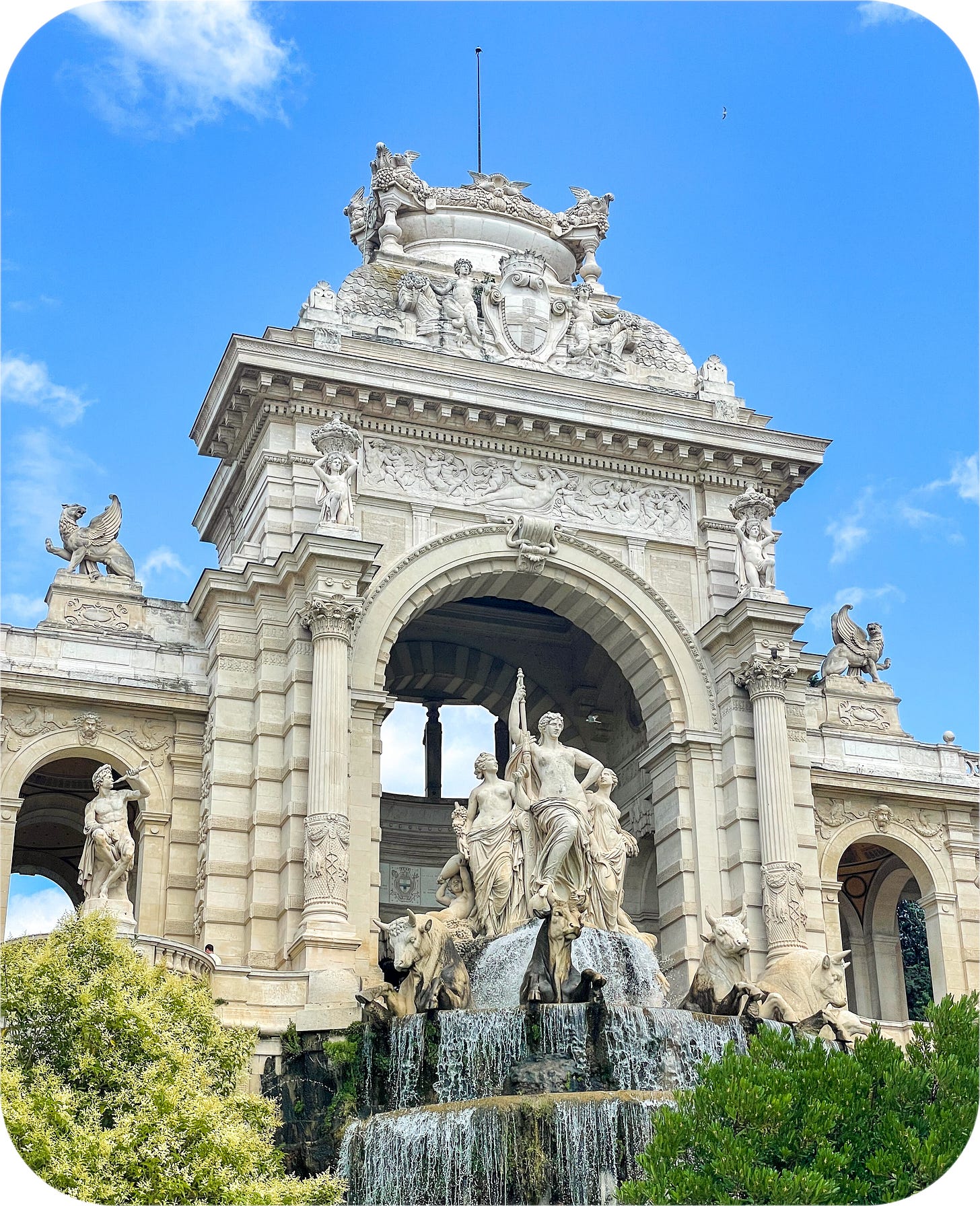
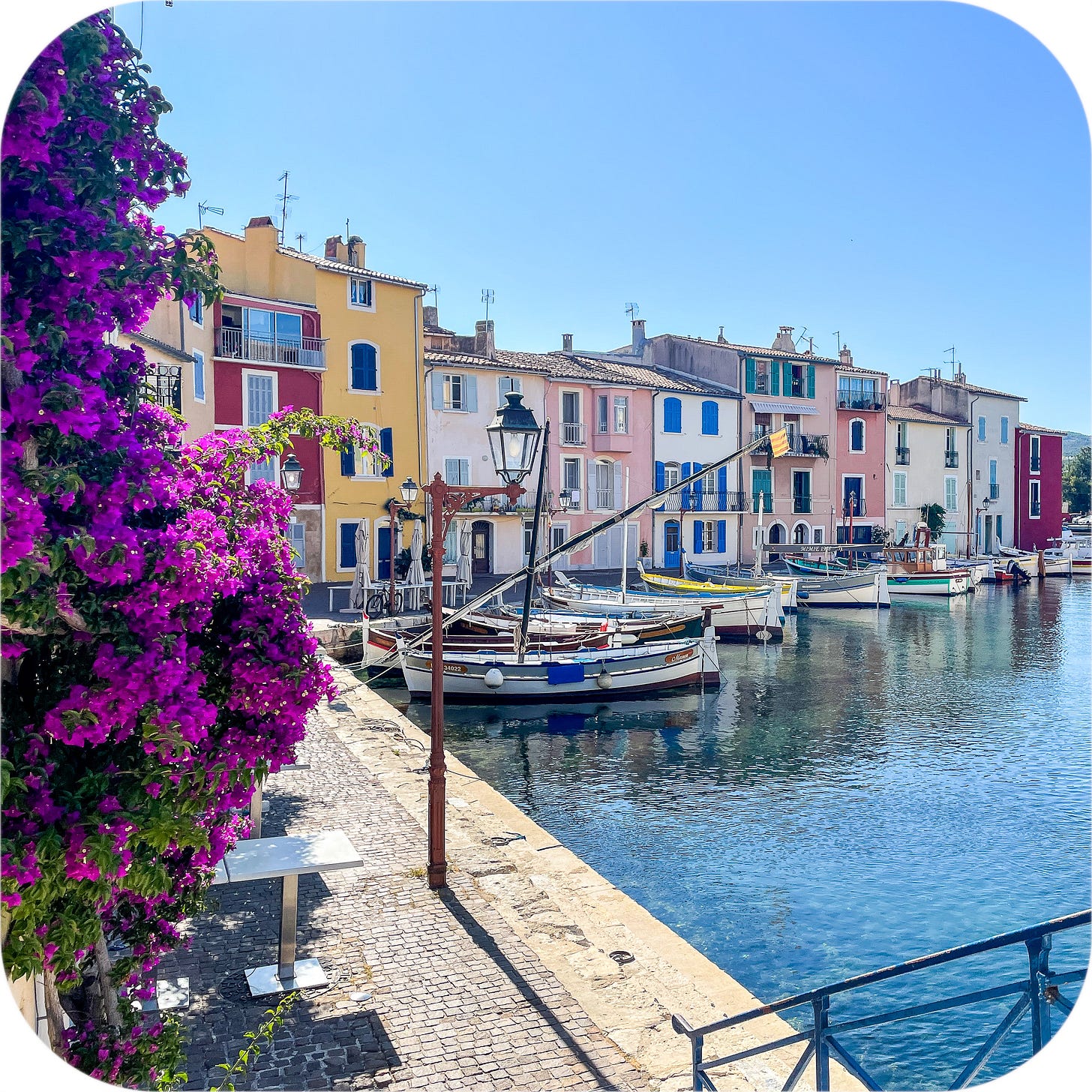
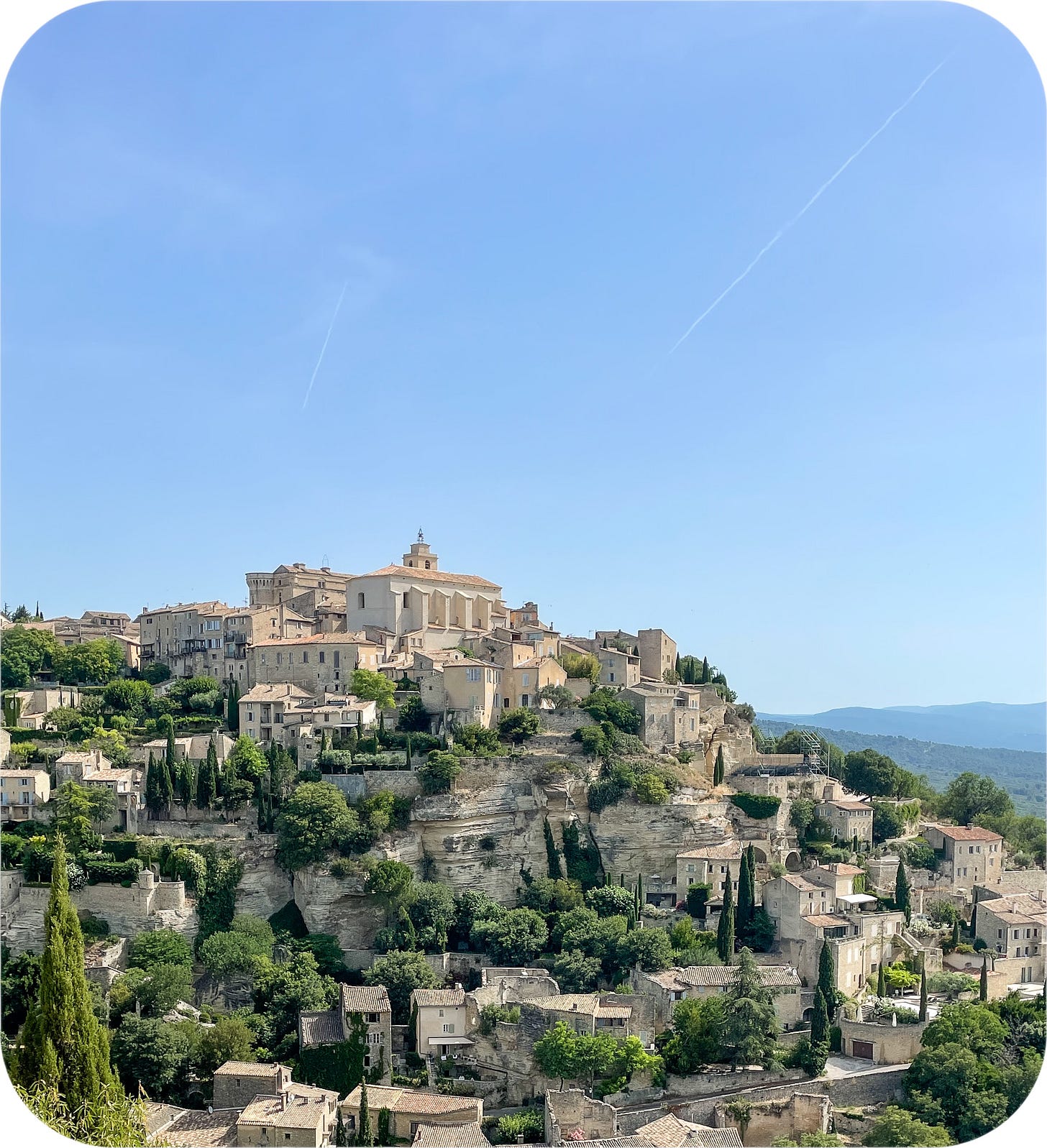
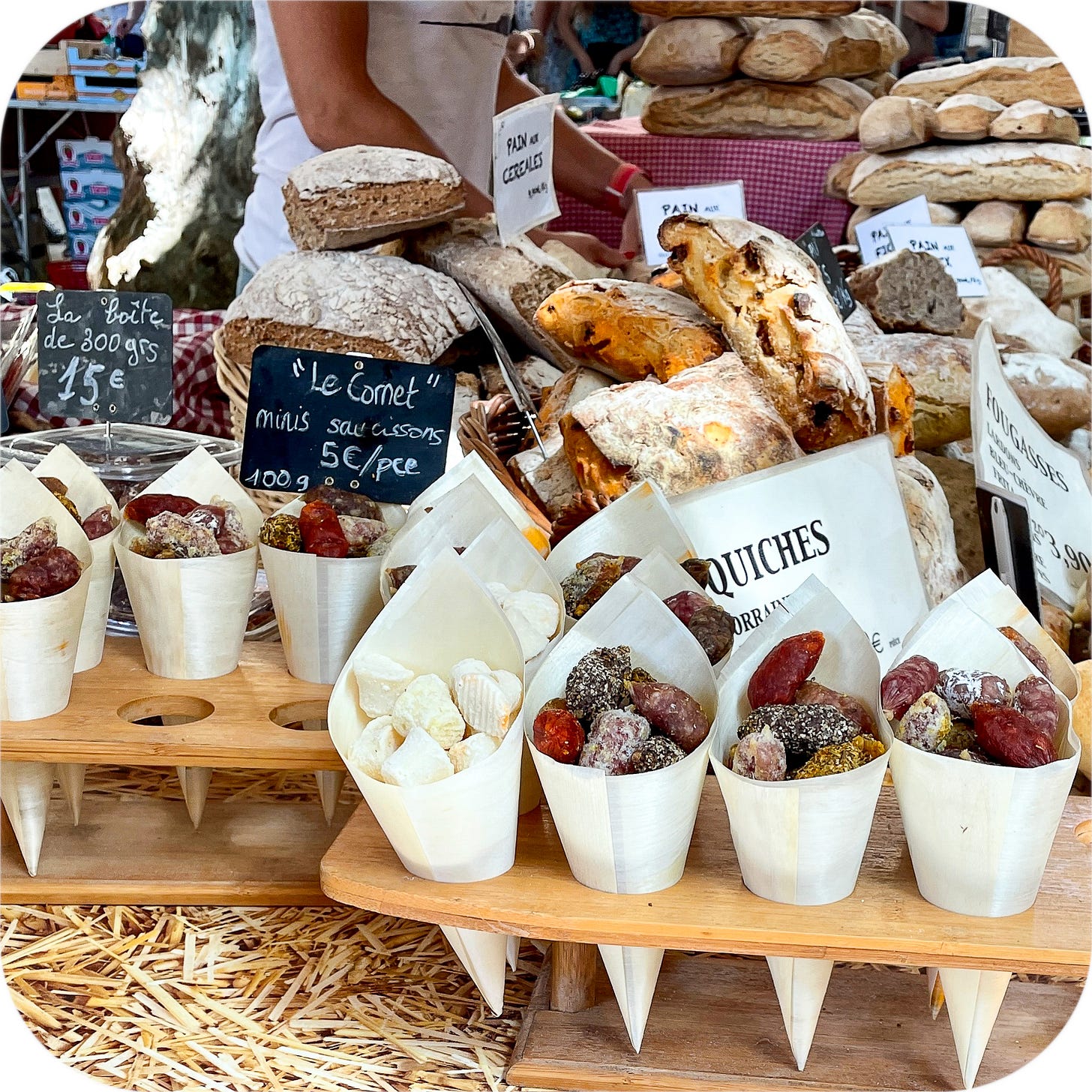



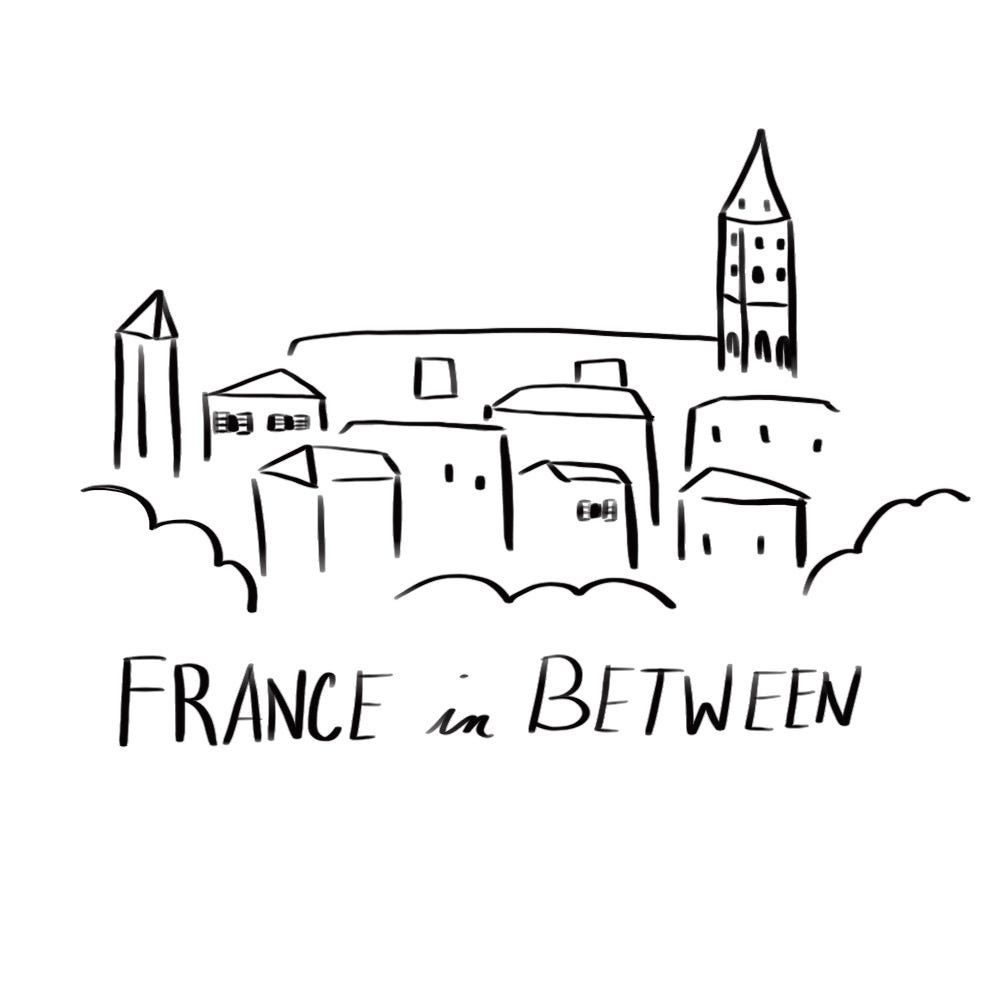







Hi Jodi, I don’t ordinarily comment on Substack. But, I have to tell you how much I like yours. Especially this nifty little one on the south of France.
Many many moons ago I briefly owned a small place in Beaulieu-sur-mer just east of Nice & still often have dreams set there.
I especially appreciate your references to books, films etc & will follow through with them. Am an avid reader of anything involving the Lost Generation & their escapades in France. Regarding the Murphys: look for Sara & Gerald, Villa America & After. It’s a memoir / biography by Honoria Donnelly, their daughter. Terrific read & chock full of photos! I found it in a thrift store years ago.
What a lovely post, and I had already saved it and decided to buy you a coffee BEFORE I read your kind recommendation. I would like to read Perfume from Provence and Madame, Will You Talk -- I had never heard of them. I've read the others except for the Van Gogh letters. And it was a relief not to see A Year in Provence...
Have you heard of A Village in the Vaucluse by Laurence Wylie? I remember reading that in university as it seemed to be quite the work of reference about life in the Provençal countryside. I should read it again, as well!
There is a place similar to La Carrière des Lumières in Paris, called L'Atelier des Lumières. I'm not sure if they are connected business-wise, but it's the same concept. We often go there when we're up in la capitale, and have seen some fabulous projections.
As for Provence, my south of France is quite different and although I've been there quite a few times, it often doesn't really click with me. I suppose I'll have to find the perfect middle-sized town to duly fall in love with the area.
Once again, thank you for the recommendation!